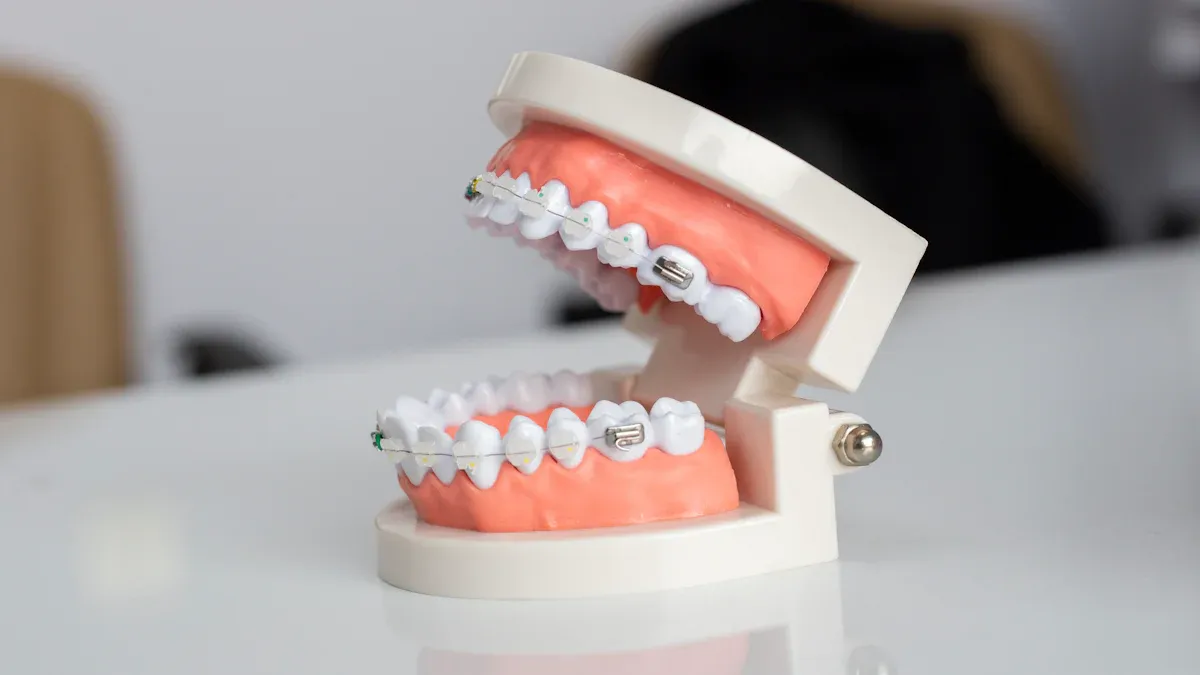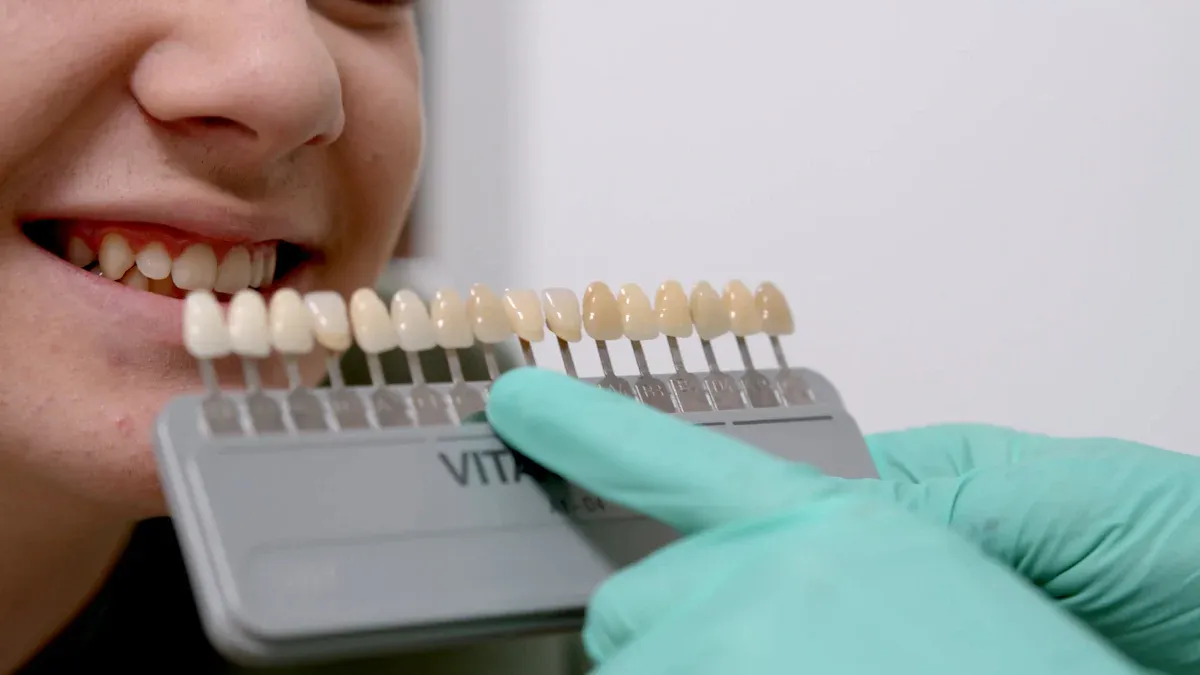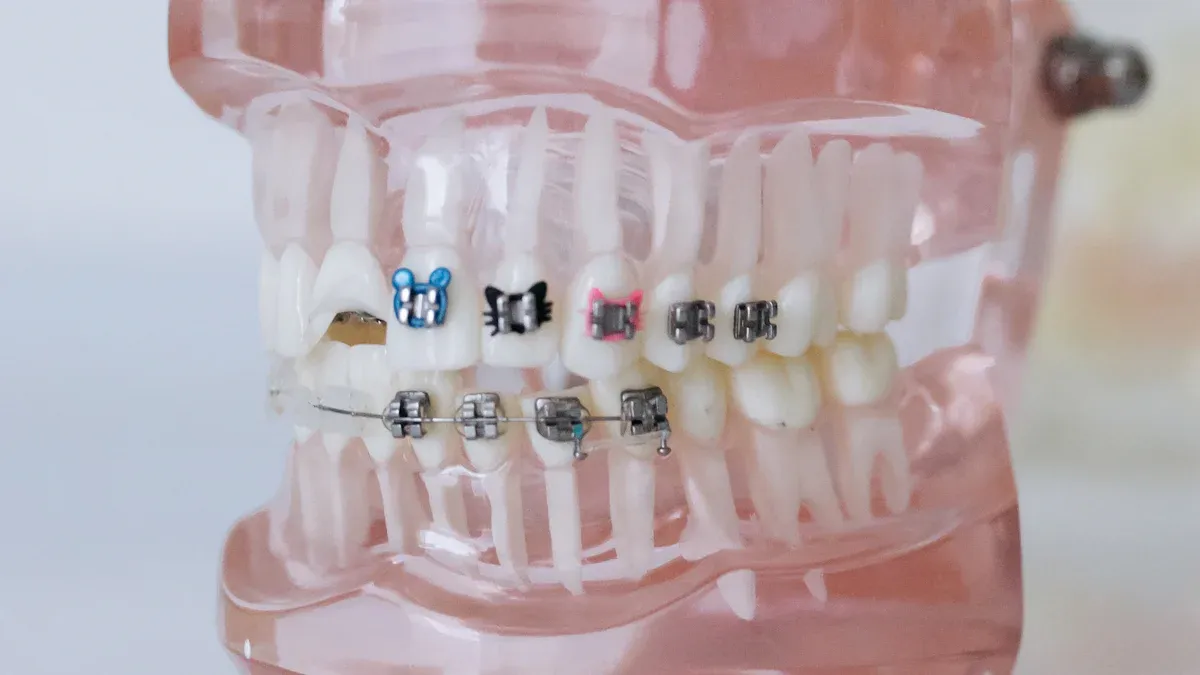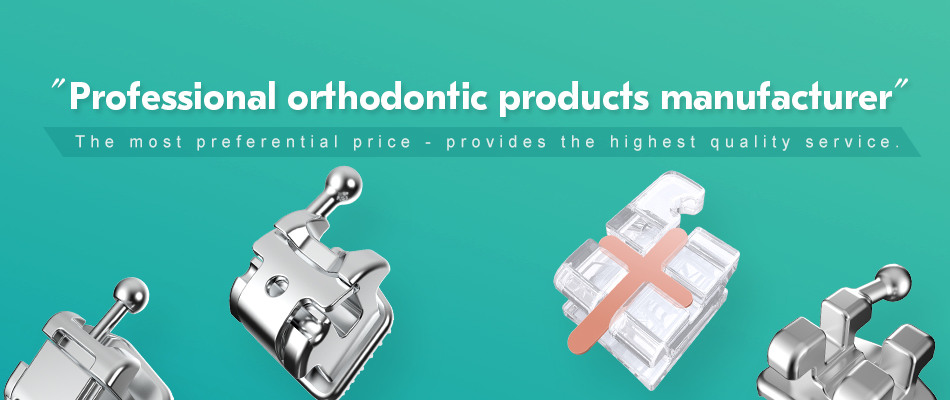
Orthodontic clinics in the Mediterranean region often face the challenge of balancing patient preferences with treatment efficiency. Ceramic braces appeal to those prioritizing aesthetics, blending seamlessly with natural teeth. However, self-ligating brackets offer faster treatment times and reduced maintenance, making them an efficient choice. For clinics catering to diverse needs, self-ligating brackets Europe has seen increasing adoption due to their ability to streamline the orthodontic process without compromising results. Evaluating these options requires considering patient demands, clinic goals, and long-term benefits.
Key Takeaways
- Ceramic braces are less noticeable and match natural teeth color.
- Self-ligating brackets work faster and need fewer dentist visits.
- People playing sports might like self-ligating brackets as they are stronger.
- Ceramic braces can stain from food, but self-ligating ones stay clean.
- Think about what patients want and clinic needs to decide best.
Ceramic Braces: Overview

How They Work
Ceramic braces function similarly to traditional metal braces but use clear or tooth-colored brackets. Orthodontists attach these brackets to the teeth using a special adhesive. A metal archwire runs through the brackets, applying consistent pressure to guide teeth into their correct positions over time. Elastic bands or ties secure the wire to the brackets, ensuring proper alignment. The ceramic material blends with the natural color of teeth, making them less noticeable than metal braces.
Benefits of Ceramic Braces
Ceramic braces offer several advantages, particularly for patients concerned about appearance. Their translucent or tooth-colored brackets make them a discreet option, appealing to adults and teenagers alike. These braces provide the same level of effectiveness as metal braces in correcting dental misalignments. Patients often appreciate their ability to achieve a straighter smile without drawing attention to their orthodontic treatment. Additionally, ceramic braces are less likely to irritate the gums and cheeks due to their smoother surface.
Drawbacks of Ceramic Braces
While ceramic braces excel in aesthetics, they come with certain limitations. Studies have shown that ceramic brackets are more prone to staining from substances like coffee, tea, or red wine. They are also less durable than their metal counterparts, with a higher likelihood of chipping or breaking. Patients involved in contact sports may find them less suitable due to their fragility. Furthermore, ceramic braces are bulkier, which can cause mild discomfort during the initial adjustment period.
| Drawback/Limitations | Description |
|---|---|
| More bulky | Ceramic brackets may be larger than metal ones, potentially causing discomfort. |
| Easily stained | Ceramic brackets can stain from substances like red wine and coffee, as shown in lab studies. |
| Demineralization of enamel | Early studies indicate ceramic braces may lead to more enamel mineral loss compared to metal. |
| Less durable | Ceramic braces are prone to chipping or breaking, especially during contact sports. |
| Harder to remove | Removal of ceramic brackets requires more force, increasing discomfort and risk of fragments. |
Despite these drawbacks, ceramic braces remain a popular choice for patients prioritizing aesthetics over durability.
Self-Ligating Brackets: Overview
How They Work
Self-ligating brackets represent a modern advancement in orthodontics. Unlike traditional braces, these brackets do not require elastic bands to hold the archwire in place. Instead, they use a built-in sliding mechanism or clip to secure the wire. This design allows the wire to move more freely, reducing friction and enabling teeth to shift more efficiently. Orthodontists often prefer this system for its ability to streamline the treatment process while maintaining precise control over tooth movement.
The self-ligating system comes in two main types: passive and active. Passive brackets use a smaller clip, which minimizes friction and is ideal for the initial stages of treatment. Active brackets, on the other hand, apply more pressure to the archwire, offering greater control during the later stages of alignment. This versatility makes self-ligating brackets a popular choice for clinics aiming to optimize treatment outcomes.
Benefits of Self-Ligating Brackets
Self-ligating brackets offer several advantages that appeal to both patients and orthodontists. These include:
- Shorter Treatment Duration: Studies have shown that self-ligating brackets can reduce overall treatment time. A systematic review highlighted their efficiency in achieving faster results compared to conventional braces.
- Fewer Appointments: The reduced need for adjustments translates to fewer visits to the clinic, which is particularly beneficial for busy patients.
- Improved Patient Comfort: The absence of elastic bands reduces friction, leading to a more comfortable experience during treatment.
- Enhanced Aesthetics: Many self-ligating brackets are available in clear or tooth-colored options, making them less noticeable than traditional metal braces.
| Study Type | Focus | Findings |
|---|---|---|
| Systematic Review | Efficacy of self-ligating brackets | Demonstrated shorter treatment duration |
| Clinical Trial | Patient experiences with brackets | Reported higher satisfaction rates |
| Comparative Study | Treatment outcomes | Showed improved alignment and fewer visits |
These benefits have contributed to the growing popularity of self-ligating brackets Europe-wide, where clinics prioritize efficiency and patient satisfaction.
Drawbacks of Self-Ligating Brackets
Despite their advantages, self-ligating brackets are not without challenges. Research has identified some limitations:
- A systematic review found no significant difference in discomfort levels between self-ligating and conventional brackets during the initial stages of treatment.
- Another study noted no substantial reduction in the number of appointments or total treatment time when compared to traditional braces.
- A randomized controlled trial suggested that factors such as the orthodontist’s technique play a more critical role in treatment success than the type of bracket used.
These findings indicate that while self-ligating brackets offer unique benefits, their performance may depend on individual cases and clinical expertise.
Ceramic vs Self-Ligating Braces: Key Comparisons

Aesthetics and Appearance
Patients often prioritize the visual appeal of their orthodontic treatment. Ceramic braces excel in this area due to their translucent or tooth-colored brackets, which blend seamlessly with natural teeth. This makes them a popular choice for individuals who want a discreet option. On the other hand, self-ligating brackets also offer aesthetic benefits, especially when clear or tooth-colored options are used. However, they may still include a visible metal component, which can make them slightly more noticeable than ceramic braces.
For clinics in regions like the Mediterranean, where patients often value appearance, ceramic braces may hold an edge. Yet, self-ligating brackets Europe has embraced provide a balance between aesthetics and functionality, appealing to those who seek both subtlety and efficiency.
Treatment Time and Efficiency
When comparing treatment durations, self-ligating brackets demonstrate a clear advantage. Studies indicate that the average treatment time for self-ligating brackets is approximately 19.19 months, whereas ceramic braces require around 21.25 months. The reduced friction in self-ligating systems allows teeth to move more freely, accelerating the alignment process. Additionally, self-ligating brackets require fewer adjustments, which minimizes chair time for both patients and orthodontists.
Ceramic braces, while effective, rely on elastic ties that can create resistance, slowing down tooth movement. For clinics aiming to optimize operational efficiency, self-ligating brackets offer a more streamlined approach to treatment.
Comfort and Maintenance
Comfort and ease of maintenance are critical factors for patients undergoing orthodontic treatment. Self-ligating brackets provide superior comfort due to their gentle forces and absence of elastic bands, which often cause irritation. They also simplify oral hygiene since they lack rubber ties that can trap plaque. In contrast, ceramic braces may cause mild discomfort initially due to their bulkier design and require more effort to maintain cleanliness.
| Feature | Self-Ligating Braces | Ceramic Braces |
|---|---|---|
| Comfort Level | Superior comfort due to gentle forces | Mild discomfort from bulkier brackets |
| Oral Hygiene | Improved hygiene, no rubber ties | Requires more effort to clean |
| Appointment Frequency | Fewer visits required | More frequent adjustments needed |
For Mediterranean clinics, where patients often lead busy lifestyles, self-ligating brackets offer a more convenient and comfortable solution.
Durability and Longevity
Durability plays a crucial role in orthodontic treatment, as patients expect their braces to withstand daily wear and tear. Ceramic braces, while aesthetically pleasing, are less durable than other options. The ceramic material is more prone to chipping or breaking, especially under pressure. Patients involved in high-impact activities or contact sports may find ceramic braces less suitable due to their fragility. Additionally, ceramic brackets can sometimes require replacement during treatment, which may extend the overall process.
In contrast, self-ligating brackets are designed with durability in mind. Their robust construction ensures they can endure the forces applied during orthodontic adjustments. The absence of elastic bands also reduces the risk of wear and tear, making them a reliable choice for long-term use. Clinics in regions like the Mediterranean, where patients often lead active lifestyles, may find self-ligating brackets a more practical option. Their longevity ensures fewer interruptions during treatment, enhancing patient satisfaction.
Cost Differences
Cost is a significant factor for both patients and clinics when choosing between ceramic braces and self-ligating brackets. Ceramic braces typically fall within a higher price range due to their aesthetic appeal and material costs. On average, they range from $4,000 to $8,500. Self-ligating brackets, on the other hand, are more affordable, with costs ranging from $3,000 to $7,000. This price difference makes self-ligating brackets an attractive option for budget-conscious patients.
| Type of Braces | Cost Range |
|---|---|
| Ceramic Braces | $4,000 to $8,500 |
| Self-Ligating Braces | $3,000 to $7,000 |
For Mediterranean clinics, balancing cost with patient preferences is essential. While ceramic braces cater to those prioritizing aesthetics, self-ligating brackets offer a cost-effective solution without compromising treatment efficiency. The growing adoption of self-ligating brackets Europe-wide reflects their appeal as a practical and economical choice for clinics aiming to optimize resources.
Suitability for Mediterranean Clinics
Patient Preferences in the Mediterranean Region
Patients in the Mediterranean region often prioritize aesthetics and comfort when selecting orthodontic treatments. Many individuals in this area value a natural appearance, making discreet options like ceramic braces highly appealing. Adults and teenagers frequently choose braces that blend seamlessly with their teeth, ensuring minimal visibility during social interactions. However, efficiency and convenience also play a significant role in decision-making. Patients with busy lifestyles prefer treatments that require fewer appointments and shorter durations, which makes self-ligating brackets an attractive alternative. Clinics in this region must balance these preferences to meet diverse patient needs effectively.
Climate Considerations and Material Performance
The Mediterranean climate, characterized by high humidity and warm temperatures, can influence the performance of orthodontic materials. Ceramic braces, while aesthetically pleasing, may face challenges in such conditions. The ceramic material is prone to staining, especially when exposed to common Mediterranean foods and beverages like coffee, wine, and olive oil. Self-ligating brackets, on the other hand, offer better resistance to discoloration and wear. Their durable design ensures consistent performance, even in demanding environmental conditions. For clinics in this region, selecting materials that withstand the climate while maintaining functionality is crucial.
Common Dental Needs in Mediterranean Clinics
Orthodontic clinics in the Mediterranean often address a wide range of dental issues, including crowding, spacing, and bite misalignments. Many patients seek treatments that provide effective results without compromising aesthetics. Self-ligating brackets Europe has increasingly adopted offer a practical solution for these needs. Their ability to reduce treatment time and improve patient comfort makes them suitable for addressing common dental concerns. Additionally, the versatility of self-ligating systems allows orthodontists to treat complex cases with precision, ensuring high levels of patient satisfaction.
Cost Analysis for Mediterranean Clinics
Cost of Ceramic Braces
Ceramic braces are often associated with higher costs due to their aesthetic appeal and material composition. The translucent or tooth-colored brackets require advanced manufacturing processes, which increase production expenses. On average, the cost of ceramic braces ranges from $4,000 to $8,500 per treatment. This price variation depends on factors such as the complexity of the case, the orthodontist’s expertise, and the clinic’s location.
Patients seeking discreet orthodontic solutions often prioritize ceramic braces despite their higher price. Clinics in the Mediterranean region, where aesthetics play a significant role, may find ceramic braces a popular choice among adults and teenagers. However, the higher upfront cost can pose a challenge for budget-conscious patients.
Cost of Self-Ligating Brackets
Self-ligating brackets offer a more cost-effective alternative, with prices typically ranging from $3,000 to $7,000. Their simpler design and reduced reliance on elastic bands contribute to lower production and maintenance costs. Additionally, the shorter treatment duration and fewer required appointments can further reduce overall expenses for patients.
For clinics, self-ligating brackets represent an efficient and economical option. Their ability to streamline treatment processes allows orthodontists to manage more cases within the same timeframe, optimizing clinic resources. This makes them particularly appealing for clinics aiming to balance affordability with high-quality care.
Factors Influencing Costs in the Mediterranean Region
Several factors influence the cost of orthodontic treatments in the Mediterranean region:
- Economic Conditions: Variations in local economies affect pricing structures. Clinics in urban areas may charge higher fees due to increased operational costs.
- Patient Preferences: The demand for aesthetic solutions like ceramic braces can drive up prices in regions where appearance is highly valued.
- Material Availability: Importing orthodontic materials can increase costs, especially for advanced systems like ceramic braces.
- Clinic Infrastructure: Modern clinics equipped with advanced technology may charge premium rates to cover investment costs.
Tip: Clinics can manage costs effectively by partnering with reliable suppliers and offering flexible payment plans to accommodate diverse patient needs.
Orthodontic clinics in the Mediterranean region must weigh aesthetics, efficiency, and cost when choosing between ceramic braces and self-ligating brackets. Ceramic braces excel in visual appeal, making them ideal for patients prioritizing discretion. Self-ligating brackets, however, offer faster treatment times, fewer appointments, and greater durability, aligning with the needs of active lifestyles.
Recommendation: Clinics should prioritize self-ligating brackets for their efficiency and cost-effectiveness. These systems meet the demands of diverse patients while optimizing clinic resources, making them the superior choice for Mediterranean practices.
FAQ
What makes self-ligating brackets more efficient than ceramic braces?
Self-ligating brackets use a sliding mechanism instead of elastic ties, reducing friction and allowing teeth to move more freely. This design shortens treatment time and requires fewer adjustments, making them a more efficient choice for orthodontic clinics.
Are ceramic braces suitable for patients with active lifestyles?
Ceramic braces are less durable and prone to chipping, making them less ideal for patients involved in high-impact activities or contact sports. Clinics may recommend self-ligating brackets for such patients due to their robust construction and reliability.
How do Mediterranean foods affect ceramic braces?
Mediterranean foods like coffee, wine, and olive oil can stain ceramic braces over time. Patients must maintain excellent oral hygiene and avoid excessive consumption of staining substances to preserve the aesthetic appeal of their braces.
Do self-ligating brackets cost less than ceramic braces?
Yes, self-ligating brackets are generally more affordable, with prices ranging from $3,000 to $7,000. Ceramic braces, due to their aesthetic design, cost between $4,000 and $8,500. Clinics can offer both options to cater to different budgets.
Which option is better for patients prioritizing aesthetics?
Ceramic braces excel in aesthetics due to their translucent or tooth-colored brackets, blending seamlessly with natural teeth. Self-ligating brackets also offer clear options but may include visible metal components, making them slightly less discreet than ceramic braces.
Post time: Apr-12-2025


